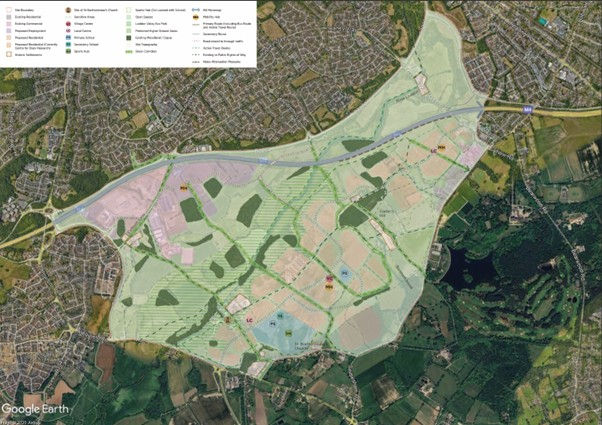Not enough Brownfield sites?
- paulstevens24

- Dec 7, 2021
- 2 min read
As ever there is plenty of interesting stuff out there on the internet, I spotted this on the Council For Protection of Rural England website:
Now I know John Halsall must read this, after all, he declared his membership of the CPRE as a potential conflict of interest in his opening statement to the Extraordinary Executive Meeting:
"Councillor John Halsall declared a personal interest in Agenda Item 62, Local Plan Update: Revised Growth Strategy, on the grounds that he was the founder member and was a director of the Campaign for the Protection of Rural Wokingham Ltd and also a member of the Campaign to Protect Rural England". But when the Executive Member for Planning and Enforcement was asked about building on Brownfield sites his reply was "there is simply not enough available previously developed land to meet the housing the Government expects. To say there is denies reality".
I would love to report that it was easy to check the Register of Brownfield Sites for Wokingham, actually it was quite hard, but a bit of digging reveals this link:
If you scroll down you can find a link to download an Excel spreadsheet with 24 Brownfield sites listed for potential development. A bit more digging and a journey back to 2015 the reasons for WBCs reluctance to use Brownfield over Greenfield becomes clearer:
"Wokingham Borough Council shares the Government’s ambition to maximise housing delivery on brownfield land. However, the Council does not support the proposals contained in this consultation for the following reasons. The proposals would take significant resources away from working on the local plan, which could result in a delay to delivering housing on suitable brownfield land. In addition, the Council has an adopted spatial vision for the Borough which may be at risk if new housing on brownfield sites is given priority over those identified in the adopted local plan".
To put it another way. It costs more and takes more effort than building on Greenfield sites?
CPRE research commissioned from planning consultants, Glenigan, revealed that brownfield sites are on average built out more than six months quicker than greenfield once they have planning permission. Small brownfield sites are particularly important in countryside areas: they are key to increasing the supply of new housing and can play an important role in maintaining the vitality of rural communities. And in November 2016 we were delighted to find out that when we analysed the pilot projects data, it suggested our researchers’ original calculations were on point: suitable brownfield sites across England could provide at least 1.1 million new homes.
The published registers showed suitable brownfield sites, as identified by local councils, for more than one million homes. Much of this capacity was ready to start building. It was even feasible for two-thirds of those homes to be delivered over the following five years, representing 60% of official figures for housing need at that time.
Dear John, if you read nothing else, read this, from the CPRE, of which you are a member:
"‘There is nothing to suggest that our supply of brownfield sites is running low. We should focus on better planning and funding systems to build new towns – but in our towns and cities, not on inaccessible and unsustainable greenfield sites."





Comments